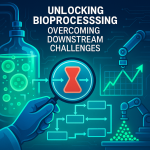🔬 This mathematical model reduces experimental work in developing gene therapy processes. Traditional methods require expensive trials.
📈 Improved predictions for adeno-associated virus production are expected. Adjustments to the model will further refine accuracy and efficiency.
🤖 This innovative blend of data analysis and experimental validation marks a significant advancement in the field!
Introduction:
The article discusses the development of a digital twin model aimed at enhancing the production processes of viral vectors, particularly recombinant adeno-associated viruses (rAAVs), which are promising tools in gene therapy. Researchers from University College London (UCL), in collaboration with Furtwangen University, have devised a mathematical model to streamline the complex development stage that traditionally requires numerous experimental trials.
- The digital twin model aims to minimize the number and cost of experiments in the production process of gene therapies.
- The model is specifically designed to optimize the development of rAAVs, which have shown potential in gene therapy applications.
- It incorporates a mechanistic mathematical approach, utilizing differential equations to simulate cell growth, transfection, and viral production.
- Initial testing indicated predictive capabilities for trends in viral vector production, but issues with cell density fitting were identified, prompting further model refinement.
- This approach is among the first to integrate synchronous experimental development with digital modeling in the context of viral vector production, which poses unique challenges due to its multi-stage process.
Conclusion:
The advancement of this digital twin model represents a significant innovation in the realm of viral vector production for gene therapies, potentially reducing both time and resource expenditures in process development. As researchers continue to refine the model, the implications for expedited and cost-effective gene therapy production could be profound, paving the way for more efficient therapeutic options in the future.



